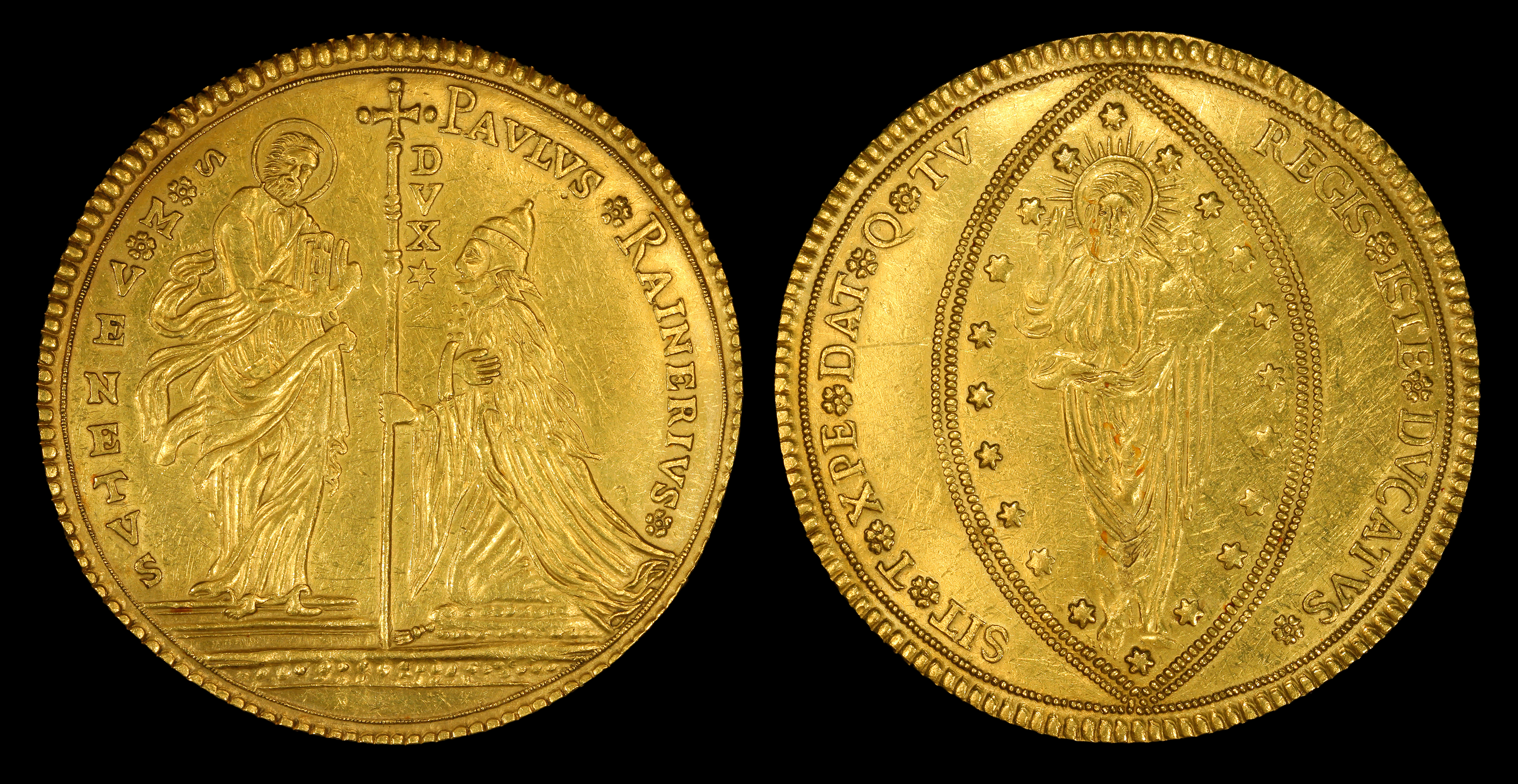Sequin (coin) on:
[Wikipedia]
[Google]
[Amazon]
 The sequin (; Venetian and it, zecchino ) is a
The sequin (; Venetian and it, zecchino ) is a
Zecchini (Sequin) by the Knights Hospitallers
{{DEFAULTSORT:Sequin (Coin) Coinage of the Republic of Venice Gold coins Medieval currencies Modern obsolete currencies Obsolete Italian currencies
 The sequin (; Venetian and it, zecchino ) is a
The sequin (; Venetian and it, zecchino ) is a gold coin
A gold coin is a coin that is made mostly or entirely of gold. Most gold coins minted since 1800 are 90‚Äď92% gold (22karat), while most of today's gold bullion coins are pure gold, such as the Britannia, Canadian Maple Leaf, and American Buffa ...
minted by the Republic of Venice
The Republic of Venice ( vec, Rep√Ļblega de Ven√®sia) or Venetian Republic ( vec, Rep√Ļblega V√®neta, links=no), traditionally known as La Serenissima ( en, Most Serene Republic of Venice, italics=yes; vec, Seren√¨sima Rep√Ļblega de Ven√®sia, ...
from the 13th century onwards.
The design of the Venetian gold ducat
The ducat () coin was used as a trade coin in Europe from the later Middle Ages from the 13th to 19th centuries. Its most familiar version, the gold ducat or sequin containing around of 98.6% fine gold, originated in Venice in 1284 and gained wi ...
, or ', remained unchanged for over 500 years, from its introduction in 1284 to the takeover of Venice by Napoleon in 1797. No other coin design has ever been produced over such a long historical period.
The reverse bears a motto in Latin
Latin (, or , ) is a classical language belonging to the Italic branch of the Indo-European languages. Latin was originally a dialect spoken in the lower Tiber area (then known as Latium) around present-day Rome, but through the power of the ...
hexameter
Hexameter is a metrical line of verses consisting of six feet (a "foot" here is the pulse, or major accent, of words in an English line of poetry; in Greek and Latin a "foot" is not an accent, but describes various combinations of syllables). It w ...
: ' ("Christ, let this duchy that you rule be given to you").
History
Initially called "ducat
The ducat () coin was used as a trade coin in Europe from the later Middle Ages from the 13th to 19th centuries. Its most familiar version, the gold ducat or sequin containing around of 98.6% fine gold, originated in Venice in 1284 and gained wi ...
" ('), for the ruling Doge of Venice
The Doge of Venice ( ; vec, Doxe de Venexia ; it, Doge di Venezia ; all derived from Latin ', "military leader"), sometimes translated as Duke (compare the Italian '), was the chief magistrate and leader of the Republic of Venice between 726 a ...
who was prominently depicted on it, it was called the ', after the Zecca (mint
MiNT is Now TOS (MiNT) is a free software alternative operating system kernel for the Atari ST system and its successors. It is a multi-tasking alternative to TOS and MagiC. Together with the free system components fVDI device drivers, XaA ...
) of Venice, since 1543 when Venice began minting a silver coin also called a ducat. The name of the mint ultimately derives from ar, ō≥ŔÉŔĎō© ('), meaning a coin mould or die.
In some regions, in later centuries, this type of coin was stitched to women's clothing such as headdresses ‚Äď this eventually led to the origin of the more modern word "sequins" to denote small shiny, circular decorations. Following the Venetian model, similar coins were used for centuries throughout the Mediterranean. After two hundred years of continuous ' production, the Byzantine Empire
The Byzantine Empire, also referred to as the Eastern Roman Empire or Byzantium, was the continuation of the Roman Empire primarily in its eastern provinces during Late Antiquity and the Middle Ages, when its capital city was Constantinopl ...
imitated with the ''basilikon
The ''basilikon'' ( el, ő≤őĪŌÉőĻőĽőĻőļŌĆőĹ ĹŌĆőľőĻŌÉőľőĪ}, "imperial oin), commonly also referred to as the (Greek: őīőŅŌÖőļő¨ŌĄőŅőĹ), was a widely circulated Byzantine silver coin of the first half of the 14th century. Its introduction marked t ...
''. In 1478, the Ottoman Empire
The Ottoman Empire, * ; is an archaic version. The definite article forms and were synonymous * and el, –ěőłŌČőľőĪőĹőĻőļőģ őĎŌÖŌĄőŅőļŌĀőĪŌĄőŅŌĀőĮőĪ, OthŇćmanikńď Avtokratoria, label=none * info page on book at Martin Luther University) ...
introduced a similar unit. In 1535, the Knights Hospitaller
The Order of Knights of the Hospital of Saint John of Jerusalem ( la, Ordo Fratrum Hospitalis Sancti Ioannis Hierosolymitani), commonly known as the Knights Hospitaller (), was a medieval and early modern Catholic Church, Catholic Military ord ...
of Malta
Malta ( , , ), officially the Republic of Malta ( mt, Repubblika ta' Malta ), is an island country in the Mediterranean Sea. It consists of an archipelago, between Italy and Libya, and is often considered a part of Southern Europe. It lies ...
did so. The Ottoman and the Maltese coins were also gold.
Coin collectors often try to accumulate a complete set of ' of "all the Doges".
See also
*Sequin
A sequin () is a small, typically shiny, generally disk-shaped ornament.
Sequins are also referred to as paillettes, spangles, or ''diamanté'' (also spelled ''diamante''). Although the words sequins, paillettes, lentejuelas, and spangles can ...
Further reading
Zecchini (Sequin) by the Knights Hospitallers
References
External links
* *{{DEFAULTSORT:Sequin (Coin) Coinage of the Republic of Venice Gold coins Medieval currencies Modern obsolete currencies Obsolete Italian currencies